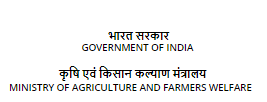ICAR-CIAE Retrofitting Urea Solution Spraying System on Paddy Straw Baler
Background:
A large portion of unused crop residues are burnt in the fields primarily to clear the left-over straw and stubbles after the harvest. Studies have also reported the several ill-effects of crop residue burning on soil organic carbon, fertility including reduction in the productivity in the long term, environmental pollution, human health problem and produces greenhouse gases causing global warming. The two crops as rice and wheat are produced large amount of residues in India. Non availability of labour, high cost of residue removal from the field and increasing use of combines in harvesting the crops are main reasons behind burning of crop residues in the fields. Rice straw are poor cattle feed due to higher content of silica in rice and wheat straw in hard stem and unchopped form is not fed due to difficult to chew. Mechanized baler operated urea spraying system has been developed for spraying of urea during baling operation on crops residues to enhance the nutritional value of crop residues.:
Technology Details:
The urea spraying system has been developed based on field observation data and the standard application rate of urea treatment. The main components used in urea spraying system are urea solution tank, flat fan nozzles, pump, strainer, cut off valve, oil type pressure gauge, boom arm, belt and pulley, etc. The belt and pulley were decided based on required rpm to operate the HTP pump with the help of baler flywheel through tractor PTO power. The baler was operated with tractor PTO power and drawbar hitch point in the field. The baler flywheel was attached with tractor PTO shaft with the help of a universal joint. The urea solution tank was mounted on the baler top section. The field evaluation of urea spraying system was carried out for paddy and wheat straw. The tractor speed was maintained at 2.5 km/h. Urea solution was prepared according to research plan means 6 kg of granular urea was mixed with 100 litres of water for 6% concentration, similar solution for 8%, and 10% concentration level, respectively. The discharge rate was adjusted according to the time interval of bales; dry blocks bale weight and % of moisture level to increase. The urea treated individual bales were wrapped airtight in polyethylene sheet, stack and store for curing period of 21 days. The urea treated and untreated samples of paddy and wheat straw were sent to ICAR-NIANP, Bangalore, for nutritional analysis in paddy and wheat season. Some analysis conducted on feed include; crude protein (CP), total ash, neutral detergent fiber (NDF), acid detergent fiber (ADF), dry matter digestibility (DMD), organic matter digestibility (OMD), metabolizable energy (ME) are also analyzed keeping in view the nutritional quality and feed safety. Due to an optimum increase in CP, IVDMD and IVOMD of treated straw, 8% UC at 50 % moisture level can be recommended for baling for paddy straw. Income from treated bales is calculated to be 10000 RS/ha and the cost of urea treatment of straw is 0.50 Rs/kg.


